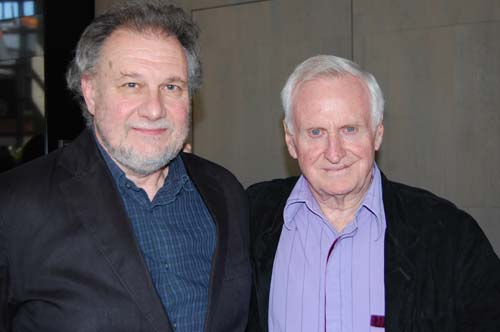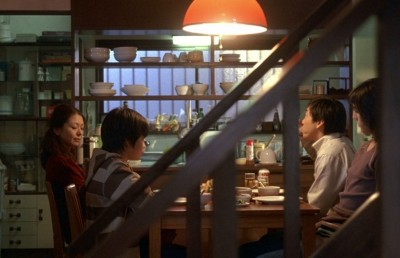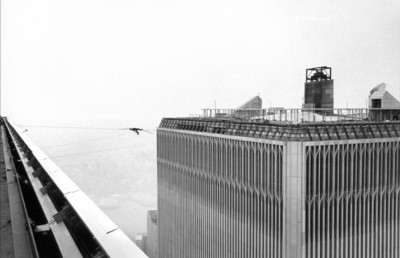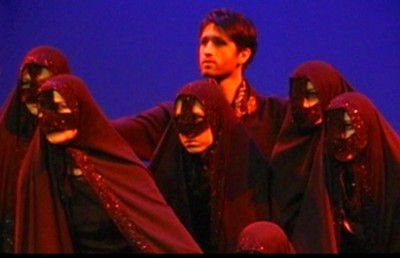John Boorman Master Class
FCN 2008

Attendees of the 2008 (37th) edition of the Festival du Nouveau Cinéma de Montréal (FNC) were treated to a Master Class with one of England’s greatest living directors, John Boorman, whose better known films include the superlative art house gangster film Point Blank (1967), the über survivalist thriller Deliverance (1972), the richly allegorical science-fiction film Zardox (1974), the unjustly maligned, philosophically inclined horror sequel Exorcist 2: The Heretic (1978), the ambitious Arthurian legend Excalibur, the splendorous, mythological ‘back to nature’ themed Emerald Forest, and the semi-autobiographical family World War 2 drama Hope and Glory.
The host for the evening was Dr. Mario Falsetto, Professor of Film Studies at the Mel Hoppenheim School of Cinema at Concordia University. The proceedings began on the wrong foot when Falsetto’s unilingual (English) introduction was quickly interrupted by an audience member who complained about the lack of a simultaneous French translation. Anyone who lives in Quebec, or knows a little about 20th century Quebec cultural history, will know how political language is in Quebec. It is inevitable. Luckily, a collective groan from the (undoubtedly majority Francophone) audience took the wind out of his sails, and Festival Programming Director Claude Chamberlan intervened (in French!) and things continued smoothly.
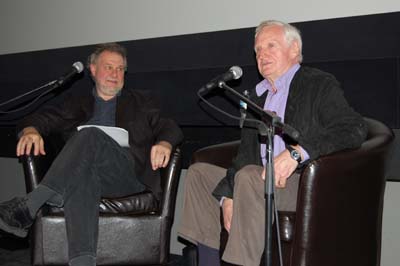
Professor Falsetto, whose publications include Perspectives on Stanley Kubrick (G. K. Hall, 1996); Personal Visions: Conversations With Contemporary Film Directors (Silman-James Press, 2000), and Stanley Kubrick: A Narrative and Stylistic Analysis (New and Expanded Second Edition, Praeger Publishers, 2001), handled the evening in a formal yet relaxed manner, mixing in early career questions, general questions and questions specific to individual films. Boorman was thoughtful, elegant, funny, and gave great thought to each question. Professor Falsetto alternated questions about acting, the creative process, the industry, actors, style, and thematic concerns, and Boorman seemed genuinely interested and responsive. What follows is a selective (and for the most part paraphrased) question/answer summary of the proceedings.
Falsetto began with a question on Boorman’s early days in the film industry and Boorman spoke about his days at BBC2, which at that time was the more experimental side of the BBC, where he made documentaries.
Falsetto moved on to a question concerning the creative process: “You once said that you carry the whole film in your head?” Boorman explained that his decision to “carry a whole film in his head” grew out of a fear of “not getting it right,” and subsequently a method of planning films out carefully. When it comes to directing actors, Boorman said that he normally resists doing too many takes because he feels repeated takes can result in an actor leaving his or her best work behind. Consequently, he prefers to give his actors the impression that everything shot will be used.
Falsetto quotes Boorman: “All art aspires to the condition of music?” Boorman expands on what he meant by this, relating cinema to a symphony of rhythm, pace, and variation.
Falsetto moved on to one of Boorman’s most fascinating films, Point Blank, and asked what it was like working with Lee Marvin.
Boorman went on to describe Marvin as a great actor who made use of his whole body, contrasting him to Richard Burton, who he said was “dead from the neck down.” Marvin “moved like a dancer” and was not afraid to take chances.
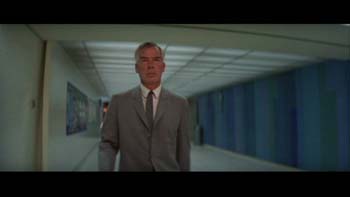
We are told that Marvin thought that the script for Point Blank was terrible, and initially did not want to do the film. Falsetto asked why Marvin did accept the film in the end, if he thought the script was terrible? According to Boorman, Marvin’s experience in the Marines was brutal, and it nearly killed him, so he saw this film –about a man who apparently dies but comes to life– as an opportunity to re-find his humanity. Boorman told a funny anecdote about how Marvin said he would do the film under one condition: Marvin took the script and threw it out the window! Boorman then brought up the Mel Gibson remake of Point Blank, Payback [directed by Brian Helgeland, 1999] and gave his views on it as follows. He said the studio producing the remake was nice enough to send him the script, which he did not think much of. He then speculated that perhaps a young Mel Gibson was walking past the window that fateful day and picked up from out of the gutter the script that Marvin threw out of the window! Falsetto commented on how the film is also a wonderful study of Los Angeles and Boorman related how the studio’s location people did not trust him and were following him around as he did his own location scouting.
Falsetto then asked Boorman to discuss the film’s expressive/symbolic use of color. Boorman explained that because it was his first film in color he was afraid of not using it well, so he decided on a color scheme where each scene would be painted in a singular color, starting off with cool, neutral colors (grey, green) and ending on red. “It was the closest I could get to monochrome.”
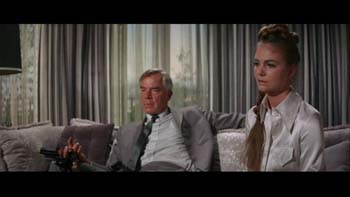
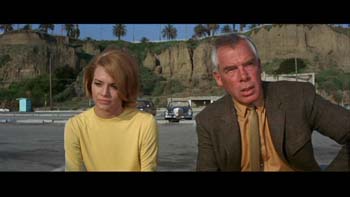
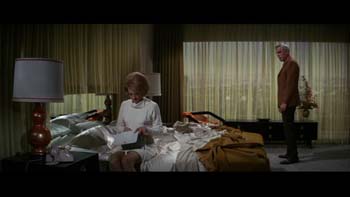
The discussion then turned to Deliverance, and Falsetto used this film to note Boorman’s penchant for making films that are logistically difficult in terms of shooting locations. For example, incorporating camera movement in the film’s mountainous locations. He asked, “How did you work with cinematographer Vilmos Zigmond?
Boorman explained: “We couldn’t lay down camera dolly tracks so we decided on using a long lens which meant we had to come up with this elaborate system of marking areas for the focus area.” Falsetto asked how he managed the different acting traditions: Jon Voight coming from a method style, Burt Reynolds coming from television, and Ned Beatty coming from regional theatre? Boorman answered that Voight would intellectualize and over think everything, which is why he tried to get his performances down in the first take, otherwise he would begin to think. Reynolds would make fun of Voight, telling him to “just get through it.”
Falsetto asked Boorman to elaborate on what he meant when he said that Deliverance was a metaphor of America? Boorman responded by citing the subtext: the struggle between man and nature. Boorman explained that the characters were going down a river that was to be damned for Atlanta residents, for the purpose of providing air conditioners and other comforts, so it was all about the ‘taming’ of nature. He described Deliverance as an adventure film with themes hidden below the surface. Falsetto commented on how Boorman treated violence differently from James Dickey, the novelist, because in the novel the Voight character comes out of the experience as a man; whereas in the film he succeeds but is also ruined by the experience, hence his feelings are far more ambiguous.
No discussion of Deliverance would be complete without a discussion of the infamous male on male rape scene? Through Falsetto’s ‘digging’ we found out about the origin of perhaps the most famous line in the film: “Squeal like a pig.” Boorman explained that he was bound by contract to making a tamer television version and needed to replace all the swear words during the rape. The actor, Bill Mckinney, fed him that line, which worked so well that he kept it in for the theatrical version. As they say, the rest is history!
Continuing with Deliverance, Falsetto asked about the thematic relevance of rivers, which seem to be in all his films? Boorman said he grew up near the Thames River, and for the last 40 years his home in Ireland has been next to a river and not one day goes by where he doesn’t touch water, swim in it, etc. “The cinema and water are friends.”
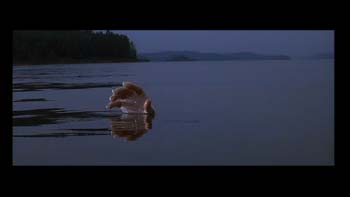
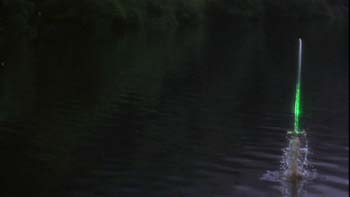
Falsetto: “You were asked to make The Exorcist and refused and then accepted to make the sequel, which was not a success. Do you think it was a good decision?”
Boorman responded by saying that he felt the original film was just about torturing a girl and he did not want to do that. He did not want to make a film about evil, but about good. But he admitted to being derelict when it came to giving audiences what they wanted: blood and violence. Boorman revealed how he thought he did some of his best work on that film. He wanted Voight but got Burton instead. He said that many of the visual effects were done in camera, a lost art now, and that he learned a lot from visual effects master Albert Whitlock. Falsetto quotes the philosopher Terre de Chardin (I paraphrase): “Only with the fantastic can we get to the cosmos.”
Boorman took this to mean that with The Heretic (and Excalibur), being an atheist, he thought it would be interesting to start with the amoeba and work toward God, with the idea that we created God and not the other way around.
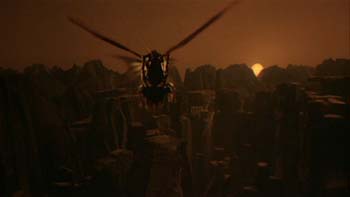
The final film discussed was Excalibur, a film that Falsetto described as being on the cusp between Christian and Pagan beliefs. Boorman spoke eloquently on how the Grail was like a cornucopia. Man had everything and then by sinning against nature lost it all, everything became waste and there was the need to find the Grail to restore nature.
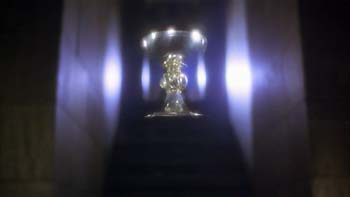
The master class ended with Boorman fielding some questions from the floor. Here is a sampling:
Q: Can a film make an impact on life?
In short: no. Boorman then went on to add that what film can do is engage an audience emotionally so that if they come across that issue in life they may be more sympathetic to the cause; but actually changing reality…no.
Q: How did the use of the projected image cast on characters in Zardox come about?
Invoking the old proverb “poverty is the mother of invention,” Boorman admitted that it was just a cheap way to get special effects into the film!
Q: Do your films help you deal with immortality?
Boorman reasoned that there is a huge gap between his life and his films. But perhaps his interest in the unconscious led him to what can be seen as spiritual issues. He continued by saying that he feels film is best defined as being dream-like. That is how he explained film to a shaman he met in the Amazon jungle when making Emerald Forest. Like in a dream, in cinema you can move from one place to another. Another person asked him what it was like directing his son in Emerald Forest. Boorman replied by saying that he was able to be more direct with his son, at one point stopping him before he even spoke a line because he could tell from how he was breathing that it would be wrong.
Q: What is your comfort level with new technology?
Boorman may have surprised many people in the audience by saying that he likes not working with film and being able to see [with digital] the result immediately.
Q: What are your thoughts about today’s cinema?
Boorman responded by arguing that the way films are marketed and released today –releasing 3000 prints at once– kills originality. In his day they would release prints gradually across major cities; what happens now is that the film makes a third of its money on the opening weekend. Hence, with such a strong dependency on that early box-office take, there is an increased need for a 30 second television sound bite to sell the film. If your film can’t be summarized in a 30 second sound bite, then forget about it. Boorman concluded by lamenting that many of today’s films are either too classical or, as in the case with There Will be Blood and No Country for Old Men, “are about film and nothing else.”
